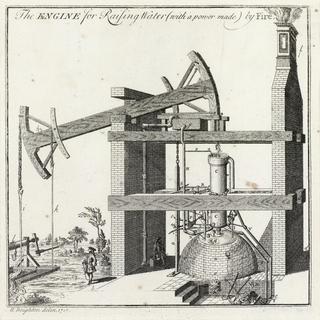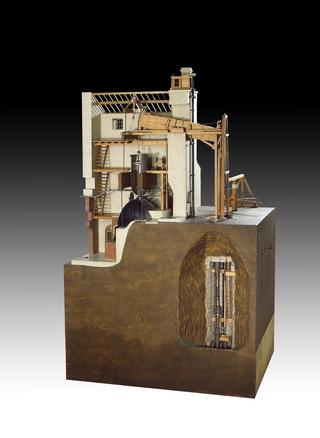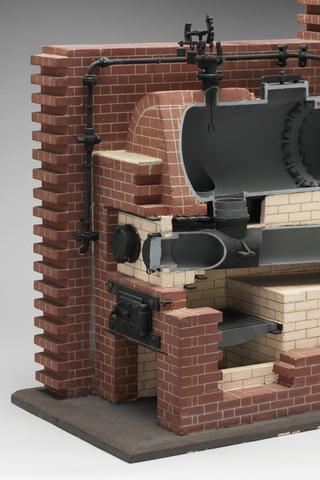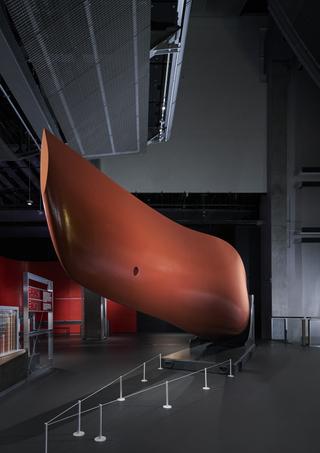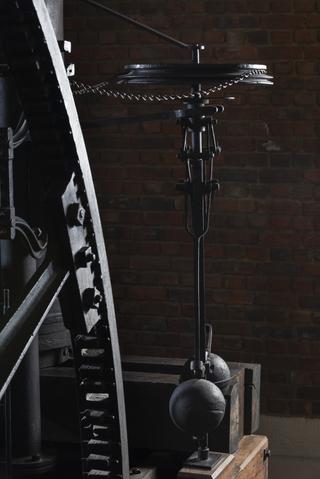
Model of A.K. Rider (1869) steam engine slide valve for variable expansion
- maker:
- Science Museum, Workshops
Model of A.K. Rider (1869) steam engine slide valve for variable expansion, on fitting, arranged with 5 others for driving and adjusting by hand
In order to adjust the work done in steam engine cylinders to suit the variations in the load, two methods are practicable; the first and simplest is to reduce the pressure in the steam chest, by throttling, when the load is below its maximum amount; the second and more economical method is to alter the fraction of the stroke during which steam is being admitted, and leave the completion of the stroke to be performed by this steam while expanding. For this latter system of working many devices have been employed, usually involving some form of valve arranged on the back of the main valve and so actuated by adjustable gearing as to cut off the steam on its way to the main valve. Such expansion slide valves first came into extensive use about 1840 in the locomotive, the gab reversing gears then employed not permitting of any variation in the point of cut-off; they, moreover, continued in use on locomotives in America and on the Continent for some years after the introduction of the link motion which has now so completely superseded them. For the slow running non-compound marine engines, in which a cut-off earlier than half stroke was generally required, the excessive compression given by the link motion, although advantageous for high piston speeds, was found to be inconvenient, so that the separate expansion valve was generally retained until, with the use of direct-acting screw engines, the speeds increased. It was, however, on the non-reversing stationary engine that these expansion arrangements were most extensively adopted, and further developed by being rendered automatic under the control of a centrifugal governor. A variable expansion valve usually consists of a main slide valve, controlling the admission, release, and compression; and a separate cut-off valve, working either on a separate face or on the back of the main valve, controlling the cut-off only, by shutting off steam from the main valve. The main valve is driven by an eccentric and has little lap, cutting off the steam after about o.75 of the stroke, while the cut-off valve is driven by another eccentric set considerably in advance of the main one. The variation of the point of cut-off is effected by altering either the lap, travel, or advance, of the expansion valve, and the range of the period of admission generally provided is from o to 0.75 of the stroke. The six models show the construction of the leading types of expansion slide valves that have been practically employed, and they are so arranged that they can be worked and adjusted from outside the case. The valves illustrated are:-Back-plate, Meyer's, piston, Rider's, Hartnell's, and Paxman's.
Details
- Category:
- Motive Power
- Object Number:
- 1903-127
- Measurements:
-
Case: 1260 mm x 1960 mm x 1000 mm,
- type:
- model
